Will Murder Hornets Overtake and Kill Your Bee Hives? Not Likely
This week, we have seen numerous reports about Japanese “Murder Hornets” making their way to the United States, with reports that they are a threat to the U.S. honey bee population, as well as humans. CBS ran a headline earlier this week that the “Murder Hornets could decimate the honey bee population.” These reports are grossly exaggerated, and need not cause the widespread panic news outlets seem to have been attempting to stir up. As apiarists, we have had numerous inquiries as to whether we should worry about these giant hornets. The simple answer to this question is NO.
A little Background: Known as the Asian Giant Hornet, or Vespa Mandarina, the species itself seems a little scary. It can grow to be between 1.5 to 2 inches long, and have very large yellow heads with prominent alien-looking eyes and a striped yellow and black abdomen. They have also been known to decimate an entire bee colony in within just a few hours. That being said, these “murder hornets” are native to the forests and low mountains of eastern and southeast Asia, and only one colony of the species has been found in North America, AND WAS EXTERMINATED, in Nanaimo, British Colombia on Vancouver Island in September of 2019, with a few associated sightings. One additional wasp believed to be from that colony, was found (already dead) on the U.S. side of the Canadian border near Blaine, Washington in December 2019.
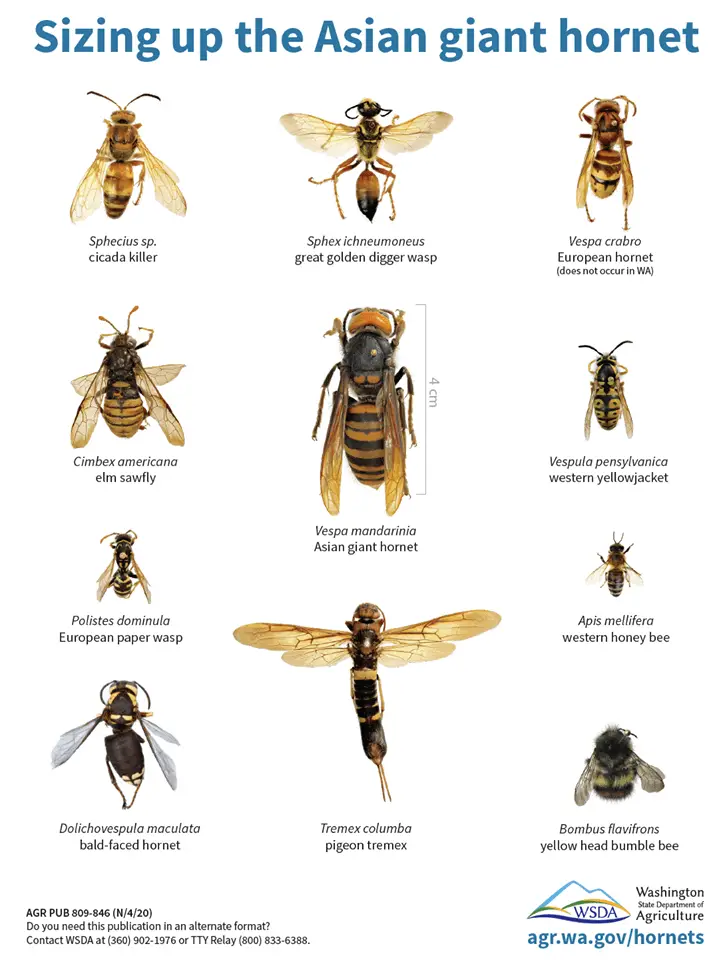
According to Douglas Yanenga of the UC Riverside Entemology Research Museum, “I was one of the authorities brought in to consult on this (the Nanaimo) case, and to my knowledge there have not been any sightings in 2020 that would suggest the eradication attempt [in Nanaimo] was unsuccessful.”
Why the Sudden Fear of Threat then?
According to an article put forth by the American Bee Journal on May 5, 2020, not only is it “ridiculous” to call the Asian Giant Hornet the “Murder Hornet”, but “some poorly-worded media reports” about the hornets “have triggered a veritable avalanche of nonsense online.” We agree. Though the Asian giant hornet has been deemed a pest because they are a predator of honey bees, are an invasive species, that will attack and kill honey bees to steal protein sources such as larvae and pupae, and may completely destroy a hive in a matter of hours—at this point, there is no need to fear a US infestation.
WSU Fact Sheet
The Washington State University Extension Service has published an AGH fact sheet put together by bee breeder-geneticist Susan Cobey and Timothy Lawrence that explains the nature and habits of the Asian Giant Hornet, including some frightful facts that bring it to the top of the list of the world’s most venomous insects. Additionally however, Lawrence also writes that “The [recent] sensationalism on the media is a concern, but … we need to find out just how extensive this infestation is”. Though “it is possible this species could establish,” wrote entomologist Sloan Tomlinson. “Has it yet? No. Until concrete evidence is presented about any further establishment by this species, it’s simply conjecture. Additionally, even IF this species is established, their infamy is overhyped and sensationalized. In Japan they do indeed kill around 30 people a year” . . . but “around 40 people are killed annually in the U.S. by domestic dogs.”
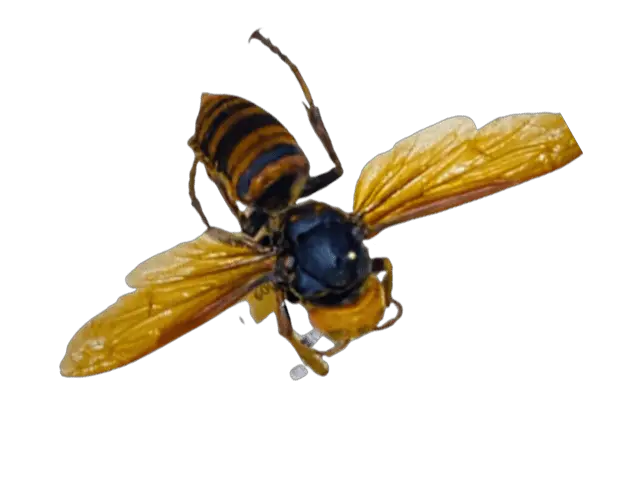
In a press release from April, entimologist Todd Murray, with the WSU Extension Service was quoted in news services nationwide, stating that the giant hornets are “a health hazard, and more importantly, a significant predator of honey bees.” However this press release was not intended to spark a cavalcade of alarm, but rather to ask naturalists and other outdoor enthusiasts to keep their eyes open for the giant hornet while out and about, and if sighted, rather than attempt to kill them, (as the hornet’s stings can penetrate beekeeping suits) report the sighting to the Washington State Department of Agriculture. This announcement was intended to better ensure “finding, trapping, and eradicating” the pest.
Moreover, entomology Ph.D. candidate and researcher Ellie Field of Iowa State University wrote on an online account that “the murder hornet articles are making the rounds quickly and they seem to be doing more harm than good. Yes, it is awesome to track insect populations (particularly staying watchful for non-native and potentially invasive species). But no, the Asian giant hornet. . . is not going to destroy America. The one nest and individual that was found around Vancouver last year was destroyed, and this doesn’t indicate any establishment. Introduction events happen all the time, all across the world! That region should continue to keep a watchful eye, but for everyone else this is not going to be relevant. There is no invasion, just a small possibility that some may have overwintered in that area.”
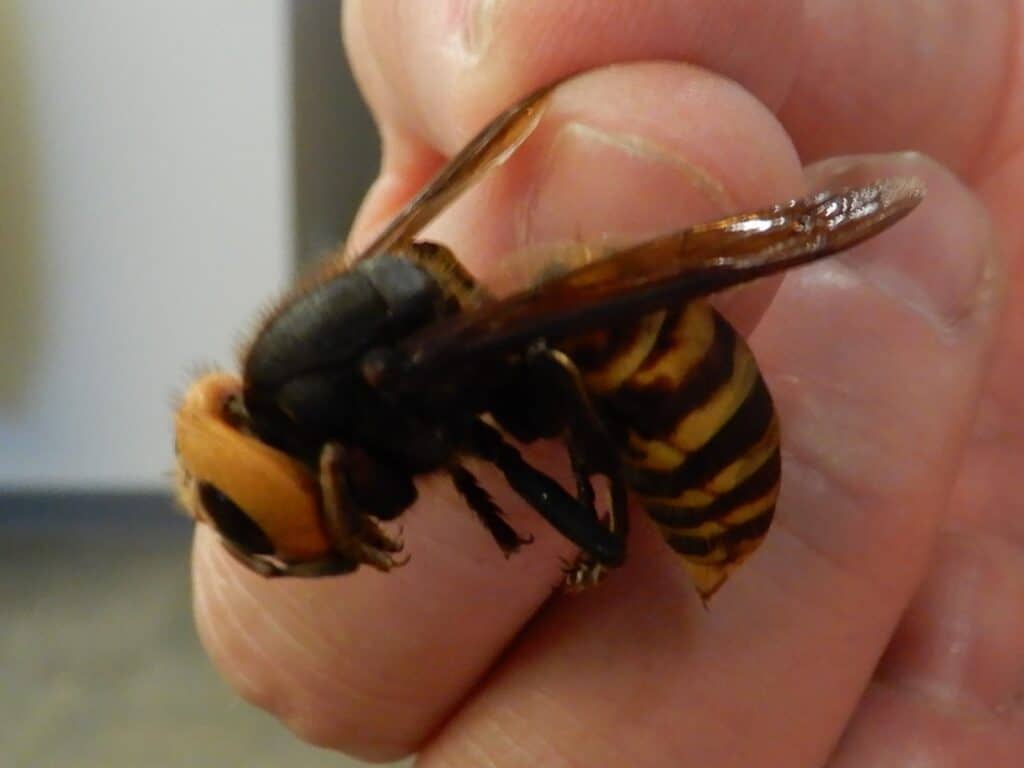
It is reported that the giant hornets’ “active season” begins in April and runs through early summer and early fall. The giant hornets have also donned the moniker “killer” or murder” hornets because their sting can be fatal to humans because it can deliver up to seven times the amount of venom as a regular honey bee, and sting multiple times. The sting is loaded with a potent neurotoxin, and thus multiple stings can kill humans, even if not allergic. That being said however, it should also be noted that the Asian Giant Hornet is not predatory upon humans, and, like honey bees, will only attck if their hive is threatened.
In summary, there is no need for apiarists in the US to fear an infestation of giant “Murder Hornets” at this time. If you come across a hornet you believe may be a giant hornet, and are unsure about insect identification, you can email an image to Lynn Kimsey at lskimsey@ucdavis.edu or contact the Entomological Society of America at https://www.entsoc.org/ or https://bit.ly/2W2jRmi.

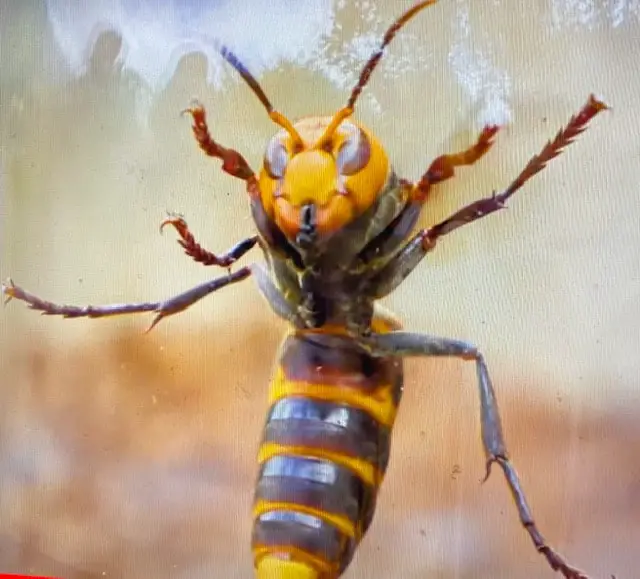
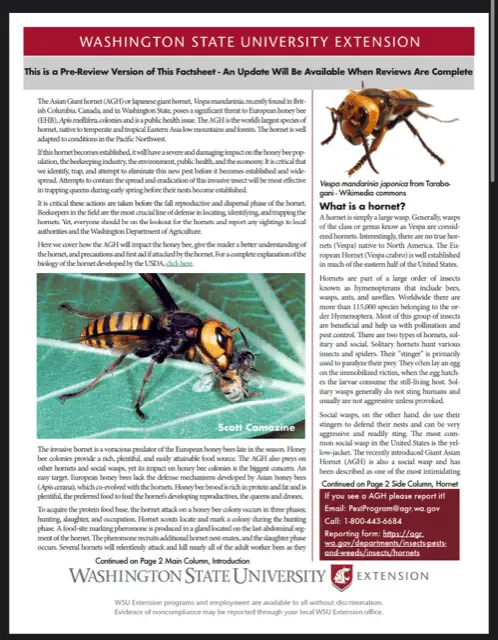
Just a clarification. Nanaimo is not ‘just across the border’ from the US. The second sighting was said to be in Blaine Wa. which is bbout 90k (as the crow flies) from Nanaimo BC located on an island separated by a large body of water.
I don’t know the range of the Giant Asian Hornet, but this would imply the two sightings are unrelated to me.
Thanks for that clarification. I had originally included info about Blaine, but removed it to shorten the post. According to the statements from the American Bee Journal (and specifically UC Davis wasp expert and researcher Lynn Kimsey, director of the Bohart Museum of Entomology and professor of entomology, UC Davis Department of Entomology and Nematology) the hornet found near Blaine in December was already dead. Hope this helps, and cheers